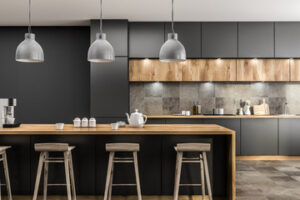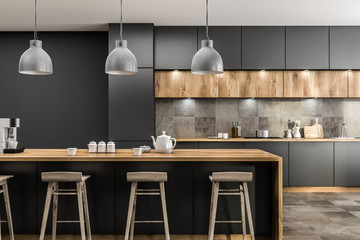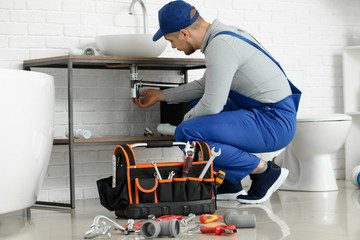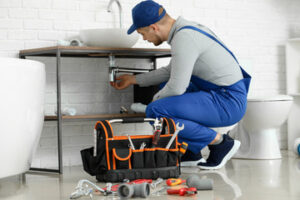Nashville Kitchen Remodeling can completely change the atmosphere of a home. A well-planned remodel improves functionality and style. It creates a more efficient and enjoyable cooking space. Homeowners often seek to combine aesthetics with practicality.

Understanding the needs of the household is crucial in kitchen remodeling. Some families prioritize storage, while others focus on entertainment space. Knowing how the kitchen is used daily helps create a practical design. Customizing the layout ensures the space meets specific needs.
Efficient use of space is a key goal in remodeling. Optimizing the layout improves workflow and comfort. A functional kitchen reduces stress during meal preparation. Smart organization systems enhance accessibility and convenience.
Lighting plays a crucial role in kitchen remodeling. Natural and artificial lighting must work together. Proper lighting improves visibility and ambiance. Layered lighting creates a balanced and inviting atmosphere.
Material selection influences both durability and style. Countertops, cabinetry, and flooring need to withstand daily use. Choosing quality materials ensures long-lasting results. A cohesive material palette enhances the kitchen’s visual appeal.
Storage solutions improve the kitchen’s efficiency. Pull-out drawers, pantry organizers, and hidden compartments maximize space. Keeping essentials within reach reduces clutter. Well-designed storage supports an organized and tidy kitchen.
Open-concept designs create a sense of spaciousness. Removing barriers between the kitchen and other living areas enhances flow. It encourages social interaction and connectivity. An open layout makes the kitchen feel larger and more welcoming.
Eco-friendly remodeling practices are gaining popularity. Using sustainable materials reduces environmental impact. Energy-efficient appliances lower utility costs. Eco-conscious designs benefit both the environment and the household budget.
Color schemes define the kitchen’s personality. Neutral tones create a calming atmosphere, while bold colors add energy. Complementary color combinations create harmony. Thoughtful color choices enhance the kitchen’s overall feel.
Upgrading kitchen appliances improves performance and convenience. Modern appliances offer better energy efficiency and advanced features. Smart technology integration adds functionality. High-quality appliances enhance the cooking experience.
Backsplashes serve both decorative and functional purposes. They protect walls from moisture and stains. A stylish backsplash adds texture and color. Choosing easy-to-clean materials ensures long-term maintenance.
Flooring options impact comfort and durability. Materials like wood, tile, and vinyl each offer distinct benefits. Slip-resistant surfaces improve safety. Proper flooring enhances both aesthetics and functionality.
Countertop selection balances style and practicality. Durable materials resist scratches and heat. Aesthetic variety allows for customization. Coordinating countertops with cabinetry creates a unified look.
Cabinetry defines the kitchen’s style and storage capacity. Custom cabinets provide tailored solutions. Soft-close mechanisms enhance functionality. Efficient cabinet layouts maximize available space.
Kitchen islands increase workspace and storage. They serve as focal points for cooking and socializing. Multifunctional islands include seating and storage. Proper placement enhances kitchen flow and efficiency.
Ventilation systems improve air quality. Proper venting reduces cooking odors and moisture buildup. High-performance range hoods increase comfort. Good ventilation maintains a fresh and clean kitchen environment.
Ergonomics influence the kitchen’s usability. Counter height, appliance placement, and storage accessibility matter. An ergonomic design reduces strain and enhances comfort. Thoughtful design makes the kitchen easier to use.
Accent details personalize the kitchen’s look. Hardware, trim, and fixtures add character. Coordinated accents create a polished finish. Subtle details elevate the overall design.
Open shelving creates a sense of openness. It provides easy access to frequently used items. Decorative displays add personality. Proper organization maintains a clean appearance.
Seating areas enhance social interaction. Breakfast bars, banquettes, and stools provide casual seating. Comfortable seating encourages lingering. Well-designed seating areas integrate with the kitchen’s flow.
Functional zoning improves kitchen efficiency. Designating areas for cooking, prep, and storage reduces congestion. Defined zones improve task management. A logical flow increases productivity.
Waste management solutions keep the kitchen clean. Built-in trash and recycling bins streamline disposal. Hidden compartments maintain a tidy appearance. Thoughtful waste management supports cleanliness.
Water fixtures impact both function and style. High-efficiency faucets reduce water usage. Hands-free options increase convenience. Stylish fixtures complement the kitchen’s design.
Personal touches make the kitchen feel unique. Artwork, plants, and textiles add warmth. Custom details reflect the homeowner’s personality. Personalization creates a sense of ownership.
Smart home integration enhances kitchen functionality. Smart appliances and lighting increase convenience. Voice and app control simplify usage. Smart systems improve overall kitchen efficiency.
Safety features protect the household. Slip-resistant flooring, rounded edges, and child locks increase safety. Fire suppression systems offer added protection. A safe kitchen reduces accidents and injuries.
Utility optimization ensures proper function. Adequate electrical outlets, gas lines, and plumbing improve performance. Proper infrastructure supports modern appliances. Thoughtful planning prevents future issues.
Energy-efficient upgrades reduce long-term costs. LED lighting, smart thermostats, and energy-saving appliances lower bills. Sustainable solutions benefit both the environment and the budget. Efficiency enhances daily comfort.
Blending modern and classic styles creates a timeless look. Combining sleek finishes with traditional elements adds depth. A balanced design remains appealing over time. Mixing styles creates a unique identity.
Artistic elements enhance the kitchen’s visual appeal. Mosaics, textured tiles, and artistic lighting add personality. Unique details make the space memorable. Artistic touches reflect the homeowner’s taste.
Natural elements create warmth and connection. Wood, stone, and greenery add texture and color. Natural materials balance modern finishes. Organic touches soften the kitchen’s overall look.
Smart storage systems improve organization. Vertical racks, pull-out trays, and tiered shelving maximize space. Proper storage reduces clutter. Efficient organization enhances kitchen flow.
Temperature control enhances comfort. Underfloor heating, ceiling fans, and smart thermostats improve conditions. Maintaining consistent temperature increases comfort. Proper climate control improves the cooking experience.
Acoustic design reduces noise levels. Sound-absorbing materials and soft-close mechanisms decrease noise. Quieter environments improve comfort. Thoughtful design creates a more relaxing space.
Flexible designs adapt to changing needs. Movable islands, adjustable shelving, and modular systems increase versatility. Adaptable kitchens meet evolving lifestyle demands. Flexibility enhances long-term functionality.
Multi-functional furniture increases utility. Convertible tables, foldable chairs, and storage benches save space. Dual-purpose pieces maximize available room. Versatile furniture supports dynamic use.
Lighting control enhances ambiance. Dimmable fixtures and color-changing options allow customization. Adjusting lighting creates different moods. Proper control improves overall atmosphere.
Seasonal adaptability improves comfort. Curtains, blinds, and insulation regulate light and temperature. Adaptable features respond to weather changes. Seasonal adjustments enhance kitchen usability.
High-quality finishes increase durability. Scratch-resistant coatings, stain-resistant fabrics, and water-sealed surfaces prolong lifespan. Quality finishes maintain appearance over time. Durable materials improve long-term value.
Designing for future needs increases longevity. Aging-in-place features like lower counters and wider walkways increase accessibility. Forward-thinking designs adapt to life stages. Future-proofing ensures lasting value.
Creative layouts make small kitchens feel larger. Open shelving, mirrored surfaces, and strategic lighting expand the space. Compact designs maximize function. Smart layouts increase perceived size.
Professional input improves project success. Designers and contractors offer valuable insights. Expert guidance ensures better execution. Professional involvement increases overall quality.
Successful kitchen remodeling blends style and function. A thoughtful design improves daily comfort. Strategic planning maximizes efficiency. A well-executed remodel increases home value and satisfaction.



